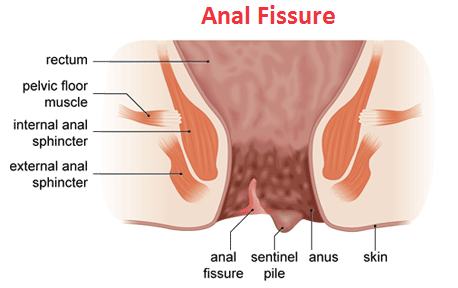
M. Mruthyumjaya Rao,’ Anukul Chandra Kar, P.Bhattacharya and Jayram Hazra
Abstract: A single blind clinical trial was carried out to evaluate the efficacy of Kaštšadi taila vasti, Hot sitz bath, Jatyadi ghftam, Abhayāristam and Triphala cūrna in the management of Fissure-in-ano at the Ano Rectal Clinic, Central Research Institute (Ay.), Kolkata during the period from May 1999 to March 2004. The observations and the results were recorded under various parameters. It is concluded that this drug combination is effective in the management of Fissure-in-ano.
Introduction
Anal fissure is a tear in the skin around the opening of the anus’. It can cause sharp pain, especially when opening the bowels. It is thought to be a common disorder for which many people do not seek medical advice. The internal anal sphincter plays a key role in the development of an anal fissure. This is one of two muscles that control the opening of the anus. Both muscles need to relax in order to pass the stool. Unlike the exterior anal sphincter, which can be tensed or relaxed voluntarily, there is no voluntary control of the internal sphincter. The internal anal sphincter may go into spasm because of the pain of a fissure causing a raised pressure within the anus. This excess pressure makes it harder to pass the stool, making constipation worse, and contributing to a vicious circle. The spasm of the internal anal sphincter can also restrict the
blood supply to the anal skin, which reduces its ability to heal. The condition parikartika is referred to in àyurvedic literature as one of the fifteen kinds of disorders which may result from injudicious use of purgatives owing to the ignorance of the physician or of the patient’. Improperly done virecana karma (purgatives) aggravates the vāta and pitta that gives rise to a sort of cutting, sawing pain in the anus, penis, umbilical region and the neck of the bladder (vasti). The omission of flatus is arrested by the väyu and lies incarcerated in the abdomen, and relish for food vanishes. Application of creams or ointments that contain local anaesthetics (e.g. lidocaine) or steroids (e.g. hydrocortisone) and an injection of outline toxin (Botox), anal dilatation, sphincterotomy, and fissurectomy (chronic fissure) are usually in practice. But these procedures have.


